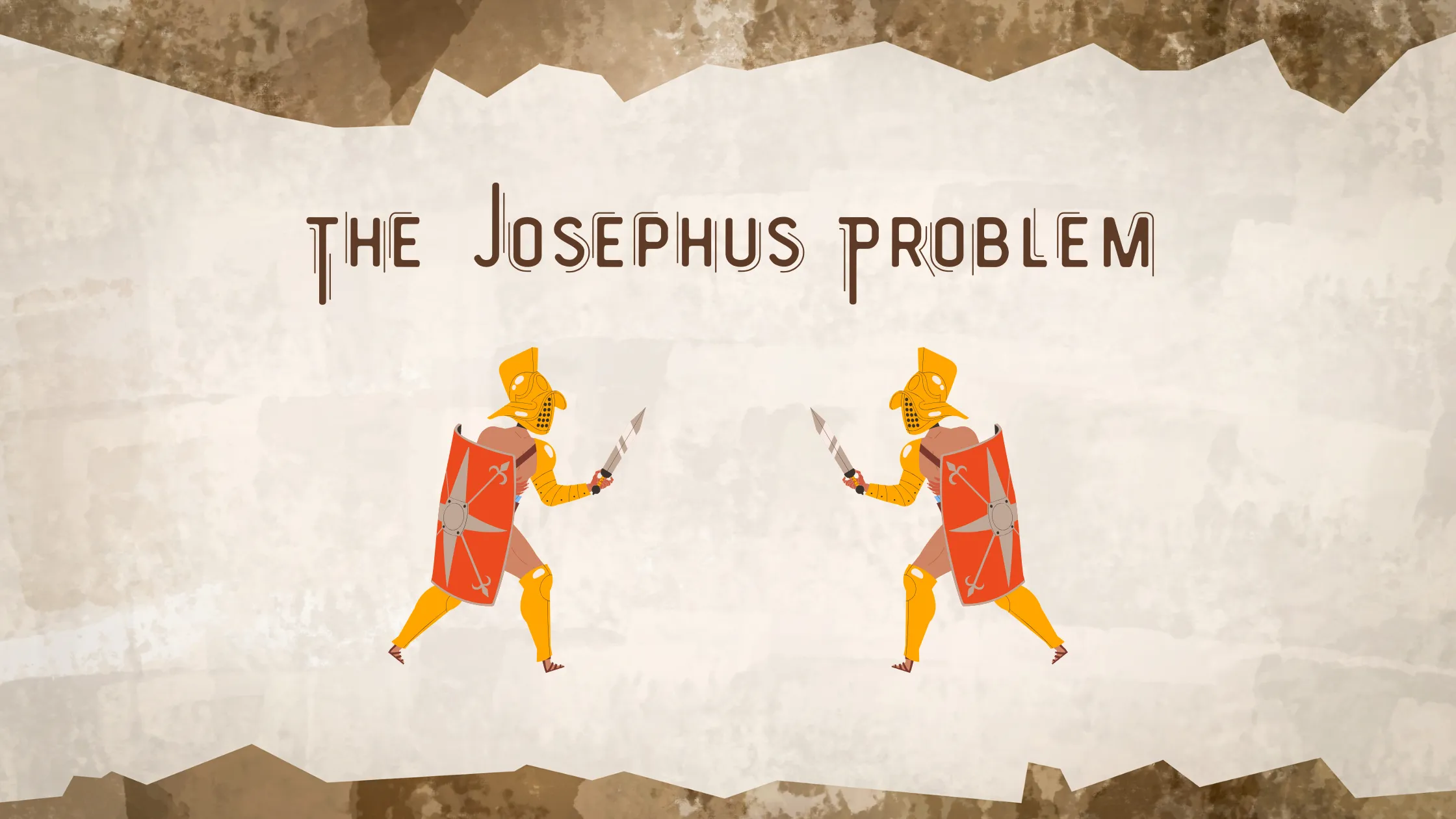The Josephus problem is a famous mathematical puzzle with an intriguing backstory. As the legend goes, in 67 AD a group of 41 Jewish rebels were trapped by the Roman army. Preferring death over capture, they decided to form a circle and kill every third remaining rebel until only one was left. That last rebel would then commit suicide rather than be taken prisoner. One of the rebels, Josephus, wanted to figure out where to sit in the circle so he would be the final survivor. Rather than die, he could then surrender to the Romans. Finding the safe spot in the circle became known as the Josephus problem.
While apocryphal, this tale provides a vivid setup for understanding the problem. Let’s break it down step-by-step:
The Problem
Formally, the Josephus problem is:
Given n people numbered 1 to n arranged in a circle, every mth person is
eliminated until only one person remains. What is the position of the last
survivor?
For example, with n=7 people and m=3:
- Persons 1, 2, and 3 remain
- Person 5 is eliminated next
- Persons 6, 7, and 1 remain
- Person 7 is eliminated
- Persons 1 and 6 remain
- Person 1 is the final survivor
The solution should work for any n and m values.
Solving through Examples
To gain insights, we can work through examples systematically. The key observations:
- The survivor is always in an odd-numbered position
- When n is a power of 2, the survivor is person 1
- Between powers of 2, the position increases by 2 each time
Here are results for different n values with m=3:
n Survivor1 12 13 34 15 36 57 78 19 310 5The Recursive Solution
The full solution uses:
- Modular arithmetic
- Expressing
nas the largest power of 2 plus a remainder - Recursing on progressively smaller
n
If n = 2^a + l where l < 2^a, the survivor is:
function survivor(n: number, m: number): number { if (n === 1) { return 1 }
return (survivor(n - 1, m) + m - 1) % n}This recursively eliminates 1 person per round until a power of 2 remains. The
final survivor is then 2l + 1.
For Josephus with n=41, written in binary as 32 + 8 + 1, l=9. The survivor is
2*9 + 1 = 19.
Applications
The Josephus problem applies to rotating processes like round robin scheduling. It is also commonly used in tech interviews to evaluate recursive programming skills. Understanding and implementing the solution demonstrates strong algorithmic abilities.
I hope this post helped explain the origins, logic, and code behind solving the famous Josephus problem.
